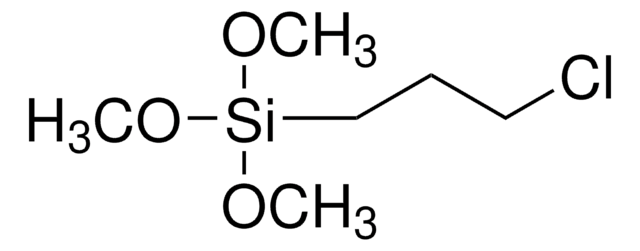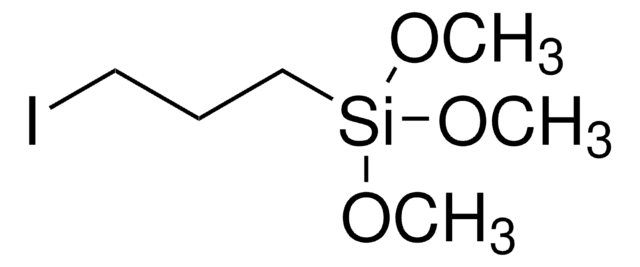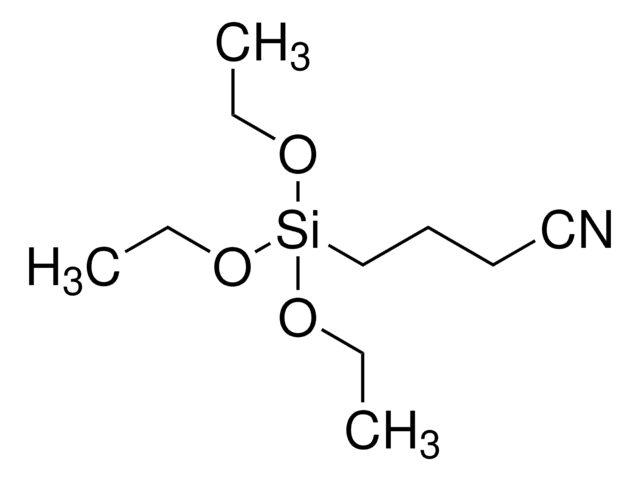569615
(3-Chloropropyl)triethoxysilane
95%
Synonyme(s) :
(gamma-Chloropropyl)triethoxysilane, 3-(Triethoxysilyl)-1-chloropropane, 3-(Triethoxysilyl)propyl chloride, 3-Chloropropropyltriethoxysilane
About This Item
Produits recommandés
Niveau de qualité
Essai
95%
Indice de réfraction
n20/D 1.418 (lit.)
Densité
1.000 g/mL at 25 °C (lit.)
Groupe fonctionnel
chloro
Chaîne SMILES
CCO[Si](CCCCl)(OCC)OCC
InChI
1S/C9H21ClO3Si/c1-4-11-14(12-5-2,13-6-3)9-7-8-10/h4-9H2,1-3H3
Clé InChI
KSCAZPYHLGGNPZ-UHFFFAOYSA-N
Vous recherchez des produits similaires ? Visite Guide de comparaison des produits
Catégories apparentées
Mention d'avertissement
Warning
Mentions de danger
Conseils de prudence
Classification des risques
Flam. Liq. 3
Code de la classe de stockage
3 - Flammable liquids
Classe de danger pour l'eau (WGK)
WGK 1
Point d'éclair (°F)
98.6 °F
Point d'éclair (°C)
37 °C
Faites votre choix parmi les versions les plus récentes :
Déjà en possession de ce produit ?
Retrouvez la documentation relative aux produits que vous avez récemment achetés dans la Bibliothèque de documents.
Les clients ont également consulté
Notre équipe de scientifiques dispose d'une expérience dans tous les secteurs de la recherche, notamment en sciences de la vie, science des matériaux, synthèse chimique, chromatographie, analyse et dans de nombreux autres domaines..
Contacter notre Service technique











